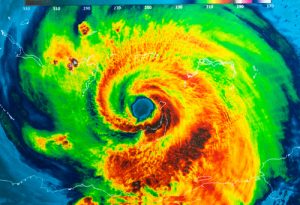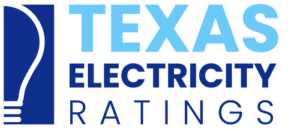
Are Your Texas Electricity Rates Hurricane Ready?
This year’s hurricane season is already underway and it’s not to be taken lightly. Extreme summer weather causes more and more disruptions to our lives. Powerful storms can force companies in the Gulf of Mexico to evacuate drilling rigs, which often spikes the price of natural gas. Storm surges can shut down coastal power plants, electric switching stations, and natural gas pipelines. Even inland cities and towns located in steep-sloped river valleys can be inundated by torrential rains. High winds snap power lines, causing power outages that plunge whole regions in the dark for days. Some storms, like Hurricane Sandy, Katrina, Harvey, submerged entire metropolitan areas, impacting energy reliability and affecting prices. Because of the combination of growing storm intensity and high regional demands for energy, tropical cyclones now tend to cause wider-felt market disruptions. These in turn can cause energy shortages and increase Texas electricity rates that may linger for months.
That’s why everyone in Texas should be aware of this year’s hurricane season and how it can effect their Texas electricity bills.
Texas Hurricane Season 2019 Predictions
Hurricane season officially runs from June 1 to November 30. Unlike last year’s “above normal activity forecast”, 2019 is predicted to be a near-normal Atlantic hurricane season.
2019 Atlantic Hurricane Predictions
| NOAA Prediction |
CSU Prediction |
Weather Co. Prediction |
TSR Prediction |
Seasonal Average 1981-2010 |
|
| Number of named storms (winds 39 mph+) |
9-15 | 13 | 14 | 12 | 12 |
| Storms becoming hurricanes (winds 74 mph+) |
4-8 | 6 | 7 | 6 | 6 |
| Major hurricanes (Cat. 3, 4 or 5, winds 111 mph+) |
2-4 | 2 | 3 | 2 | 3 |
A Certain Amount of Uncertainty
All of these forecasts come with a certain amount of…er, uncertainty. For example, NOAA’s prediction comes with a 70% probability. The remaining 30% is uncertainty due to the effects from several factors that either help or hinder tropical cyclone formation. So with that in mind, let’s quickly review the conditions that spawn hurricanes:
- WARM sea surface temperatures (SST) in the Main Development Region (MDR) of the tropical Atlantic. The MDR spans the tropical Atlantic Ocean from west Africa to the Caribbean. The threshold for tropical storm formation is when SSTs get above 26.5°C (about 80°F). Not only does the water sea warm the atmosphere above it, the warm sea water also evaporates into the air. Warm, dry air coming off the coast of west Africa can pick up more water vapor. But if the air is too dry, it won’t pick up anything. This process creates convection currents to form which pulls in more air, which evaporates more warm water, which…you get the idea. The system gathers more heat energy and builds in strength and intensity ultimately forming a hurricane.
- CALM atmosphere. Tropical storms flourish when heated water vapor begins rising through convection into the sky without being disturbed by outside wind currents. As long as there’s calm air that allows storms systems to pull a high energy rate warm SSTs, tropical storms can grow into monsters. But, strong wind currents from outside this system that blow vertically across the system (shearing) can displace the storm’s convection column and eventually dissipate the storm.
Current Storm Spawning Conditions
Right now, SSTs readings are showing between 26°- 28°C all the way across the MDR and into the Gulf of Mexico. So far the trade winds blowing westward from Africa have been weak for the most part. Last year, these winds near Dakar were so dry and dusty, they wouldn’t even pick up water vapor (sort of like when you pour water on parched soil — it’s too dry to absorb the water). This year, the west African monsoon season has been wetter and won’t carry as much dust. All told, this is starting to sound like good news for tropical storm formation.
But the big question hovering over the Atlantic season concerns the El Niño in the Pacific Ocean.
What El Niño?
According to NOAA, data indicates that El Niño or El Niño Southern Oscillation (ENSO) is indeed present at the equator in the Pacific Ocean. Sea surface temperatures, (SSTs) are above average all across most of the Pacific (particularly along the Alaska coast). The Pacific Ocean is a very, very big ocean. That’s a LOT of warm water at the equator that’s warming the atmosphere and evaporating a LOT of water up into it. So, it should come as no surprise that this can have a major effect on both global atmosphere circulation and the weather patterns in Texas.
The weekly ENSO report has so far showed continued warming across the Pacific Ocean. Because ocean conditions keep changing, subsequent forecasts are based on probabilities. For example, one forecast based on cooling SSTs from this past April called for a 40% chance of weak El Niño emerging and then fading to neutral conditions between September and November. As we have seen, that has all since changed. The recent status reports say there is a better than 65% chance that it will last through summer and a 55% chance of it lasting until fall or winter.
El Nino Effects On Atlantic Hurricanes
El Niño is important to the Atlantic hurricane season because it influences the circulation of the atmosphere at the equator (known as the Walker Circulation). As El Niño moves the Walker Circulation eastward, it brings wind shear into the western part of the MDR. That means tropical storm systems entering the MDR have a higher chance of falling apart out at sea.
This El Niño is expected to continue through the Northern Hemisphere summer and persist into the fall, possibly even lasting into winter. For cities in Texas that’s good news especially during August and September which is the height of the hurricane season when most storms form. Any late summer storms moving across the MDR will likely encounter the El Niño wind shearing and (hopefully) fall apart before making landfall in the U.S.
For Texas customers looking for cheap electricity rates this winter, remember that El Niño can help reduce your winter electricity usage. Not only does that cut your bills but it also drives down prices. El Niños typically reach their full strength between October and February. Their atmospheric effects can bring moderate winters to most of North America. Unfortunately, it’s still too early to know how much stronger this El Niño may become (if at all). At the moment, it’s not expected to be anywhere as powerful the one in 2016. Most forecast models predict that only a weak El Niño will last through the winter.
Summer Weather and Your Texas Electricity Rates
Natural gas use for power generation is having a decisive effect on electricity rates in Texas. Increased natural gas-fired power generation is now driving summer natural gas demand —and the bulk of electricity being used by everyone goes to air conditioning. EIA cites that natural gas consumed for power generation alone climbed by 10% from May 29 through June 5. All that usage has an effect on natural gas price in Texas, especially when you stop and consider that summer is also when natural gas production accelerates so that enough gas can be put into storage for the coming winter.
In spite of the fact that U.S. natural gas in storage ended the winter heating season at the lowest level since 2014, prices have actually fallen. The near month natural gas futures contract closed on June 6 at a a three-year low of $2.324/mmBTU. That’s down $1.27 since the year’s high of $3.59/mmBtU on January 14. EIA’s STEO is forecasting “strong growth in U.S. natural gas production”. Storage injection rates are also high, hitting about 44% higher than the five-year average thus far for the April-October refill season. Fracking operations in west Texas have produced so much natural gas that drillers are pumping gas back into the ground to store it in old wells until prices rise.
Even still, temperatures across the country have also stayed comparatively moderate so far. Overall demand for electricity, and consequently natural gas, has also stayed below forecast demands for both ERCOT in Texas and the eastern Interconnection states. Of course, things will probably change. After all, summer is just getting started.
Texas Electricity Usage Forecast: Heat is Coming.
The NOAA June-July-August (JJA) 2019 temperature outlook indicates that above normal seasonal mean temperatures are most likely for the eastern and western thirds of the US, including Alaska. Below normal seasonal mean temperatures and wetter conditions are more likely for parts of the Central Plains.
For Texas, Summer 2019 is not expected to be as hot as last year — at least so far. West and Central Texas are likely to have a hotter-than-normal summer. ERCOT is predicting a mild summer by comparison with temperatures near-normal but possibly leaning towards the hot-ish side moving into August/September.
With rising temperatures in the northeast and Texas, energy consumers can expect to use more energy to keep cool. However, with the exception of a very few storm systems slipping into the Gulf of Mexico and shutting down gas platforms, natural gas prices could remain low throughout the summer months. With the other exception of heat waves and high demand, low fuel costs for generators could help keep electricity rates lower. So while Texas energy consumers might use more electricity than average this summer for cooling, there’s a good chance that they won’t be paying higher rates for it. Plus, if you take advantage of the comparatively mild weather to improve your home’s energy efficiency, you could to reduce your year ’round electricity usage even further.
Reduce Texas Electricity Bills, Shop for a Better Rate
While this summer’s hurricane season might not turn out to be so bad, please bear in mind that it only takes ONE storm to cause a tragedy. Even if the sun is shining and the birds are singing happy little songs, make sure your family has a hurricane safety plan and everyone knows what to do in the event that dangerous weather is coming to Texas.
That all said, energy customers in Texas can hope for low energy prices probably hanging on for a while longer. But those long days with high temperatures on the way! Keep your cool this summer with our other energy efficiency tips and by shopping for a great electricity rate from https://www.texaselectricityratings.com. Compare plans, read provider reviews, and choose the best Texas electricity supplier that fits your family’s needs all year round!
